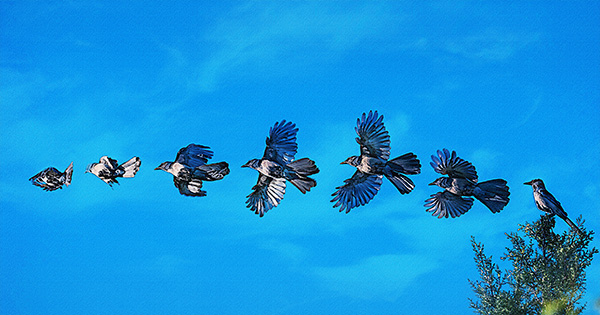
by successfulbob | bird photography, Lumix G9, photography, photography creativity, photography software
Flight of the Blue Jay
I’m still a bit limited in getting out to photograph I’m trying to keep my camera reflexes in good shape. I continue looking for creative photo opportunities close to home. Anytime I can study the behavior of birds, no matter the type I find it adds to the storehouse of knowledge that will make ALL my avian photography better.
A case in point. I’ve been watching birds from my back porch and seeing what I can do to show behavior. I prefer to show movement vs. a still portrait in my work when possible. I have noticed that birds will tend to repeat patterns if they are hanging out in one area. IE a hummingbird will approach a feeder or flower a certain way almost every time returning to the same branch to rest. If a bird goes to the top of a tree, there is a good possibility that the bird will return to the same branch in a short period. I often share that you need to observe wildlife for a while before picking up your camera for the most exciting images.
 Screen capture from Adobe Bridge of bluejay flight
Screen capture from Adobe Bridge of bluejay flight
Most birds will take off into the wind. The bluejay above was facing the sun and the wind direction. The Great Blue Heron along with many other birds will usually offload some poo just before taking off. If startled or they are feeling threatened they will tend to turn away from the perceived threat.
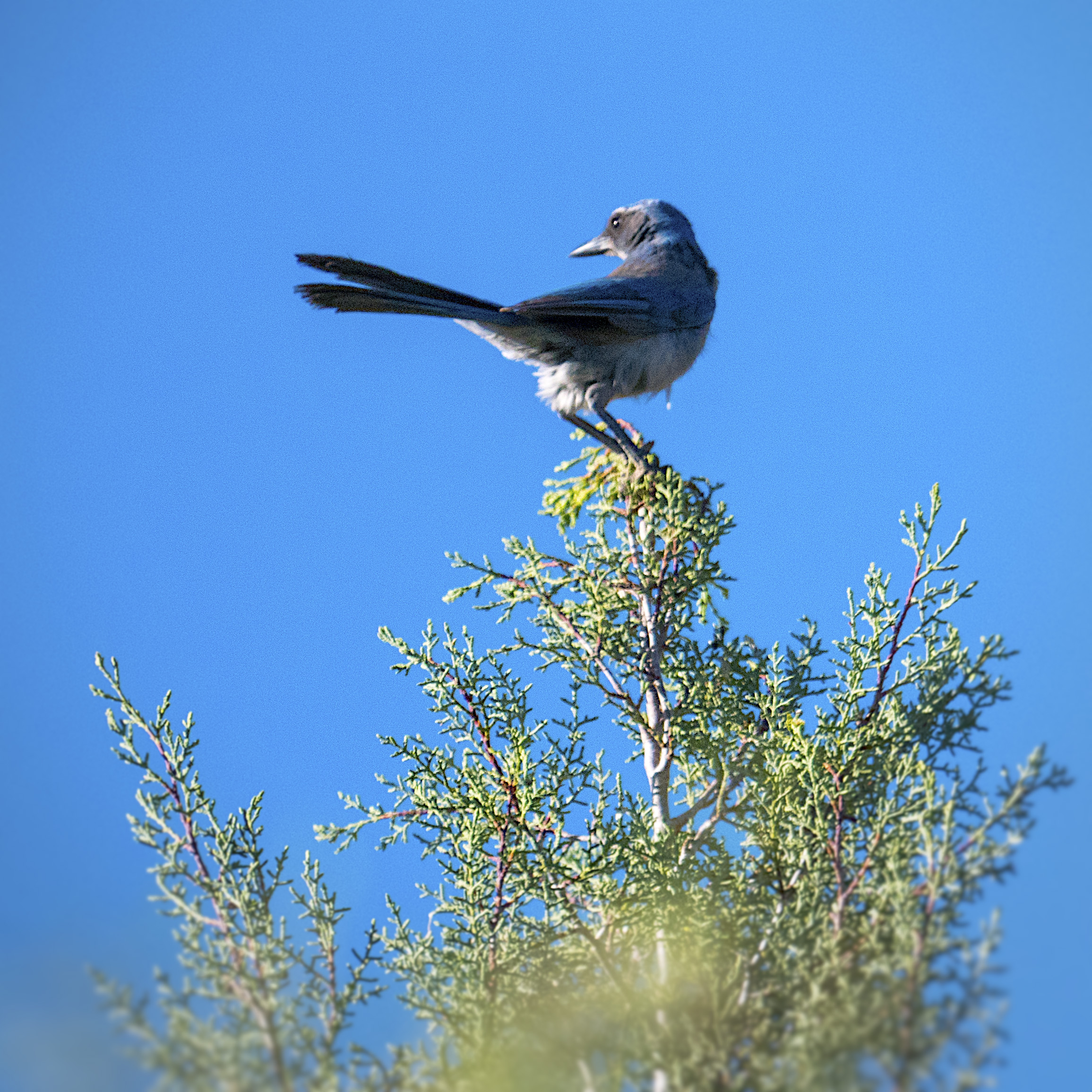 This bluejay landed in the top of the tree waving in the light breeze.
This bluejay landed in the top of the tree waving in the light breeze.
I watched as it left the tree and tried to memorize how it began its flight. Did it fly high and up or start to dive to create lift? How did the wings move? With that image in my mind, I set the Lumix G9 camera to SH which stands for Super High speed. It uses the electronic shutter to allow for twenty FPS. The Leica 100-400mm lens was used fully racked out to its 800MM equivalent
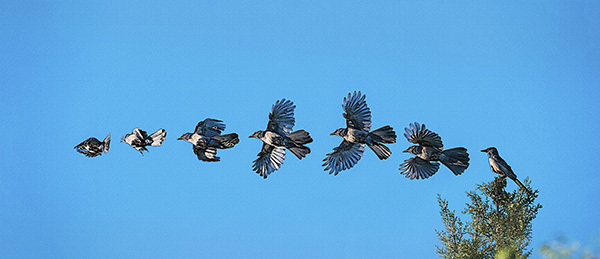 Flight of the Bluejay with watercolor treatment
Flight of the Bluejay with watercolor treatment
The image above was composited using Photoshop Layers and Masks. All relevant photos were selected in Adobe Bridge. Under the Tools Menu, I chose Load Files into Photoshop Layers which placed all files into a single PSD. Additional canvas size was added to the left side. Each image was offset and masked so that each image was not overlapping. Then a series of Photoshop Filters were applied to create a watercolor feel to the image.
 Because the sky was flat, I added a cloud image to the Photoshop File.
Because the sky was flat, I added a cloud image to the Photoshop File.
A cloud image was opened and dragged into the flight file. Blend Modes were experimented with until I found one that added subtle sky detail.
This one might call for a Photoshop tutorial to show the progression of this image build. Let me know if you would like to see me produce one.
Yours in Creative Photography, Bob

by successfulbob | bird photography, fine art photography, flower photography, imaging competition, photography, photography competition, photography creativity
Professional Photographers of America
Southwest District – Artist Category
The other day I shared the Photographic Open results for the PPA Southwest District Photographic Competition. Today I share my results from the Artist Competition. All four images were judged to be of Merit category quality. They all scored in the low 80’s to earn a District Seal.. Because they did not score above an 85, they will not have a chance to be judged for the PPA Loan Collection. Very proud of these results. With all four being judged a Merit when they are entered into the International Photographic Competition (IPC) I will earn a Bronze medal in the August judging and receive it at the convention next year in Atlanta.
 This image is titled Grand Opening. I’ve been experimenting with some new techniques with art brushes in some of my art.
This image is titled Grand Opening. I’ve been experimenting with some new techniques with art brushes in some of my art.
The judging in the Artist Category is, of course, on the final image but also the transformation from the original to the final is examined for the amount of change and how well those changes to the image were accomplished. That is why there is a reference image. This allows the judges to see the starting point of the project.
 Hummingbird Study is the transformation of a slightly underexposed image of the bird that was extracted from the scene and worked into an artistic background
Hummingbird Study is the transformation of a slightly underexposed image of the bird that was extracted from the scene and worked into an artistic background
 A dragonfly pausing in the morning light becomes transformed with some Layers of texture and various color and lighting treatments.
A dragonfly pausing in the morning light becomes transformed with some Layers of texture and various color and lighting treatments.
 This rose has moved from a photo to a classical feel of a painting. In all cases, there are many renditions of an image as it goes through the transformation process.
This rose has moved from a photo to a classical feel of a painting. In all cases, there are many renditions of an image as it goes through the transformation process.
I participate to keep myself motivated to learn new techniques and ways of processing images so I can stretch my artistic goals. I am so very fortunate to be working in a medium that has the untold potential for transforming images. If I ever felt that I had mastered the medium entirely, it would be time to move on to the next adventure.
Still way too much to learn and share!
Yours in Creative Photography, Bob
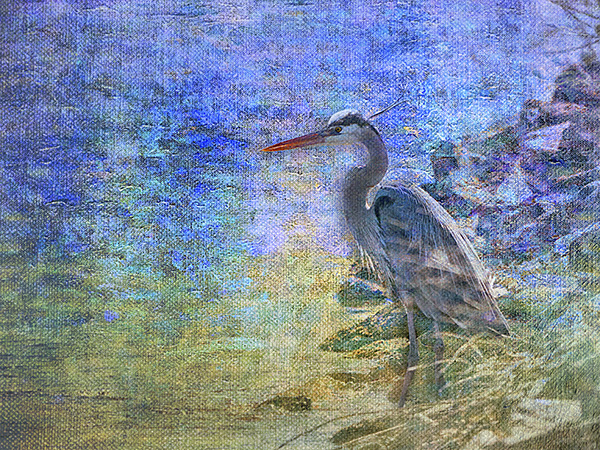
by successfulbob | bird photography, fine art photography, Lumix G9, LumixGH5, photography, photography gear, wildlife photography
Blackwater National Wildlife Refuge – Part Three
If you have followed my work for any length of time, you know that I enjoy moving my work into a more painting-based look. I have taken a term I heard from Julianne Kost and adopted it for my new business. “Lens Based Artist.” I have decided to start promoting my more art based images and have begun gallery representation and selling my work as art.
More on that in future posts. (things are starting to take off. YAY!)
Back to Blackwater images and the post-processing. Here are a few photos of which I have played using the PhotoSynthesis process I have been working on over the years.
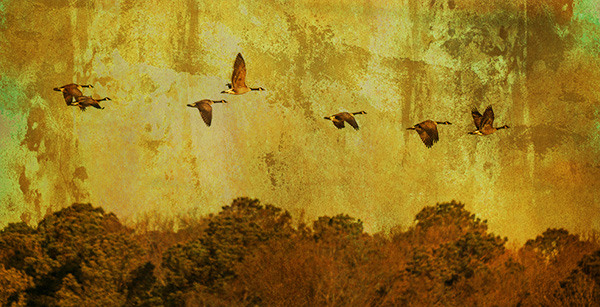 Geese in Flight. Love the wing positions and pattern of the birds in the sky.
Geese in Flight. Love the wing positions and pattern of the birds in the sky.
I worked on this image on the plane while en route back to Arizona from my speaking engagement in Maryland where the images were captured. My seatmate was fascinated by the process, and I talked him through my thinking as I worked on the photo. There are several layers of multiple images blended using Adobe Photoshop’s blend Modes and masks. The geese in flight created their art with all the different wing positions. I was able to capture their flight using the **Lumix GH5 and the Leica 100-400mm lens. The reach of this lens with the stabilization in the camera are making captures such as this easier than ever.
 Great Blue Heron on the shoreline.
Great Blue Heron on the shoreline.
After working on the piece and adding layers of textures, I pulled the image into Skylum’s Focus CK (part of the Creative Kit or available as a stand-alone) to add a bit of selective sharpness to the subject and vignette and slight blurring to the rest of the image. I use this tool in the Macro setting quite often. I could do the same thing directly in Photoshop, but it would take much more time and many more steps to accomplish the same thing. Plugins are very handy. I decide whether to purchase plugins based on how often I perform specific techniques. When I find the plugin saves me the time or makes it possible for me to do something I would not be able to accomplish otherwise, I buy.
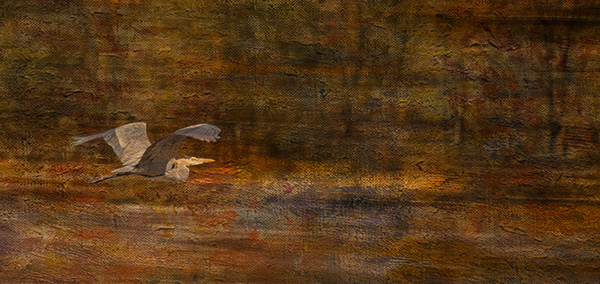 Heron in Flight – All images are © Bob Coates Photography – All Rights Reserved
Heron in Flight – All images are © Bob Coates Photography – All Rights Reserved
I don’t think any of these images are ‘ready for prime time’ as yet. I think of them as sketches testing ideas and pointing to the direction I wish to go.
Yours in Creative Photography, Bob
** I’ll be using the Lumix G9 in the future for most of my wildlife shooting. Designed with the stills photographer in mind, it adds 6 1/2 stops of handholdabilty (GH5 has 5) along with a better grip and button design for still photographers.
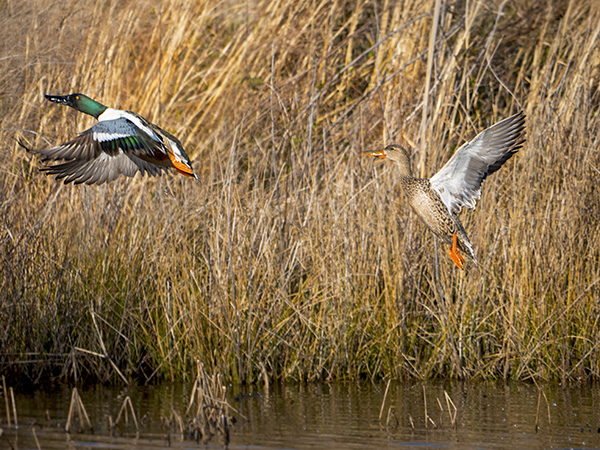
by successfulbob | bird photography, LumixGH5, photography, wildlife photography
Blackwater National Wildlife Refuge – Part Two
While in Maryland presenting some photography programs to MDPPA I found some extra time to go in search of wildlife. I had the pleasure of spending a couple of days with Chris Paulis as he took us to the wildlife refuge from Columbia a couple of hours away in Cambridge, Maryland.
You can check the first post where I shared some large avian creatures AKA the Great Blue Herons. Today I am going to show the world of ducks that we were able to find. There were lots of Northern Shovelers which show quite beautiful plumage. If you don’t know better, it’s relatively easy to mistake their feather patterns for Mallards. Since both were hanging around you can check out the similarities and the differences.
Onward to the duck photos!
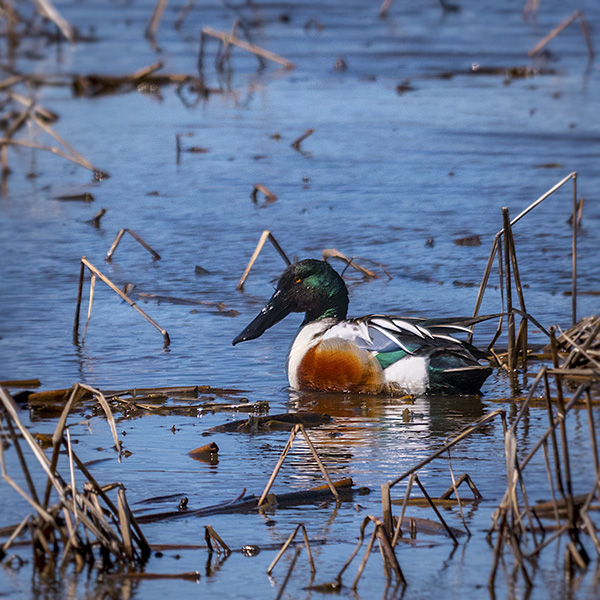 These guys tended to stay right on the edge of being able to get beautiful photos. Male Northern Shoveler.
These guys tended to stay right on the edge of being able to get beautiful photos. Male Northern Shoveler.
Both Chris and I were using Panasonic Lumix cameras, He had the Lumix G9, and I had the Lumix GH5. We both used the Lumix G Leica 100-400mm f4.5-6.3 lens. Having that reach at full extension (800mm 35mm FF equivalent) made it possible for us to capture many of the shots that would otherwise have been more humdrum. The five-axis image stabilization enabled hand holding even fully extended. It makes a huge difference in the tracking the ever-changing movement of our subjects.
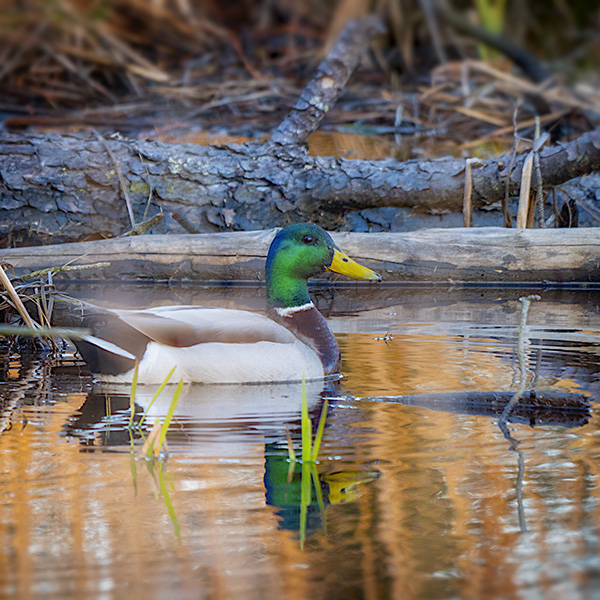 The reflection of the sunset light on the water warms this photo of a male Mallard.
The reflection of the sunset light on the water warms this photo of a male Mallard.
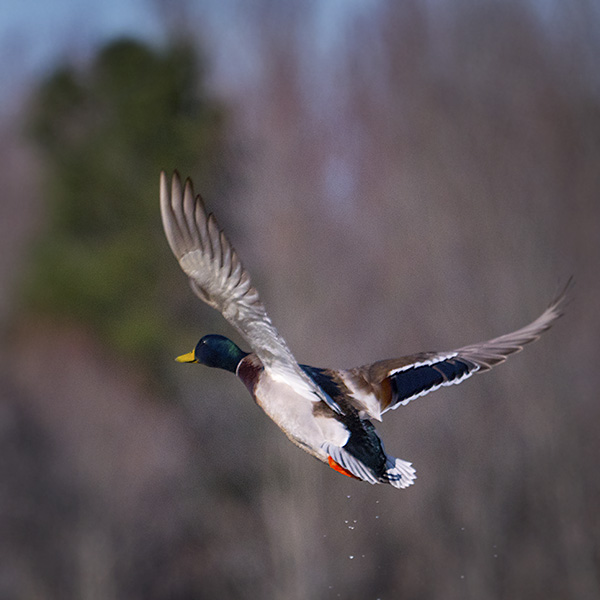 Male Mallard duck in flight.
Male Mallard duck in flight.
If at all possible I try to capture images that include behavior. Taken just after leaving the water droplets fall helping to add more detail to the story.
 This photo is one of my favorite images from the day. A couple of Northern Shoveler ducks take to the air.
This photo is one of my favorite images from the day. A couple of Northern Shoveler ducks take to the air.
It was a great day, so I probably have one or two more posts to share from our refuge adventure.
Yours in Creative Photography, Bob
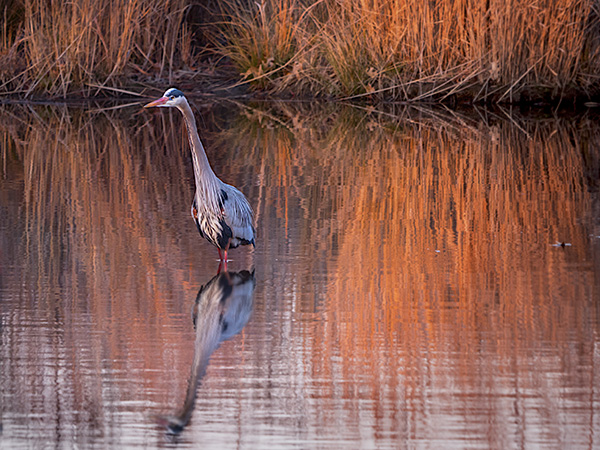
by successfulbob | bird photography, LumixGH5, photography, photography education, wildlife photography
Blackwater National Wildlife Refuge
Last week I was speaking at the Maryland Professional Photographers Association. It was a great group, and we made a solid connection in what became an all-day program due to weather conditions that were a wee bit unusual for this time of year.
For this trip, I scheduled some extra time to get out and photograph wildlife. I had an excellent guide and companion for the shooting days in Chris Paulis! (check out Chris’ work here) Chris and I had a blast looking for photo opportunities in the area. On Friday we drove two hours each way to spend time at the Blackwater National Wildlife Refuge. Chris had mentioned he hadn’t had a lot of luck there in the past, but I think we did pretty well. We made the loop through the refuge eight or nine times discovering different wildlife situations on each cycle.
The majority of my images were captured with the Lumix GH5 (currently $200 off for a limited time) and the Lumix G Leica 100-400mm lens. Chris had the same lens and was shooting with the new stills flagship camera the Lumix G9. (mine came in right after I returned from the trip. More to come about that new camera)
I enjoy wildlife photography, and my goal is to have images that show either beautiful lighting or behavior images. I’ll share some below and in another post or two over the next week.
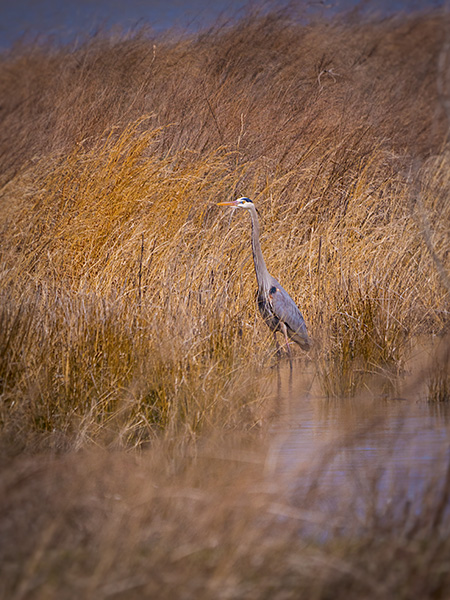 Sometimes a simple capture featuring the environment works well and helps tell the story.
Sometimes a simple capture featuring the environment works well and helps tell the story.
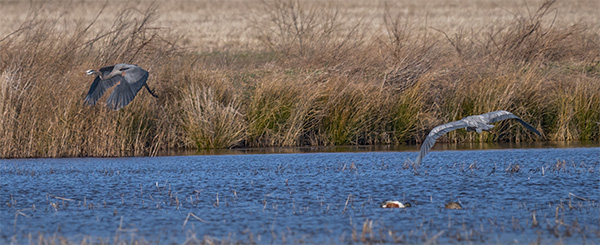 Still environmental, this image has a bit more behavior. I laughingly title this Heron Airport.
Still environmental, this image has a bit more behavior. I laughingly title this Heron Airport.
 It’s all about the light and shadow. Add in some lovely water reflections, and now we’re cooking. Getting photographs like this take time and patience. There are only a few minutes in the morning and afternoon when the light starts to work like this. And then there’s having the performer in place at the same time as the light.
It’s all about the light and shadow. Add in some lovely water reflections, and now we’re cooking. Getting photographs like this take time and patience. There are only a few minutes in the morning and afternoon when the light starts to work like this. And then there’s having the performer in place at the same time as the light.
Next time some intimate portraits of my heron budies. Til then go get ya some great photo ops!
Yours in creative Photography, Bob
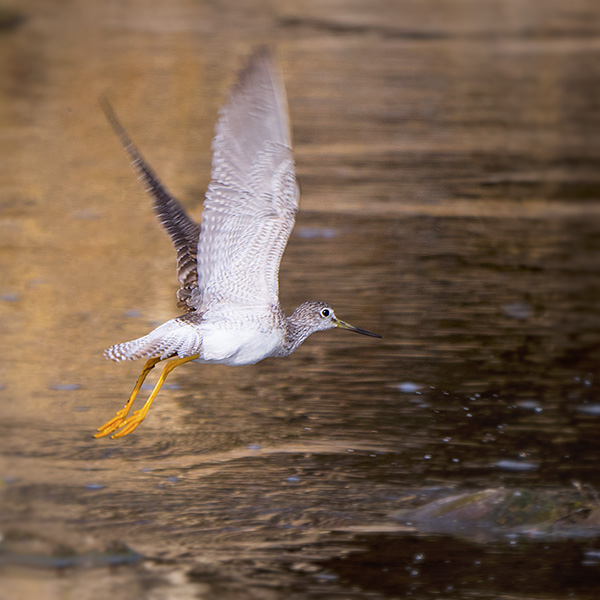
by successfulbob | bird photography, landscape photography, LumixGH5, photography, photography gear, photography software, wildlife photography
Salt River Wildlife – Part Two
As I mentioned in the previous post using the new gear from Panasonic with five-axis image stabilization such as in the Lumix GH5 and the long reach of the Leica 100-400mm lens makes photographing wildlife a new joy. Here are a few more examples from a photo shoot in the Salt River Wildlife basin near Fort McDowell, AZ.
 The avian population on the Salt River is diverse. This is a Yellowlegs Sandpiper.
The avian population on the Salt River is diverse. This is a Yellowlegs Sandpiper.
The 800mm equivalent reach of the Leica lens makes acquiring action photos such as this possible. The stabilization allows for handholding even though the lens is extended to its fullest range. I enjoy making images that include behavior such as birds in flight. Got just the right shutter speed in this case as the body of the bird is tack sharp while the wing tips are slightly blurred showing motion.
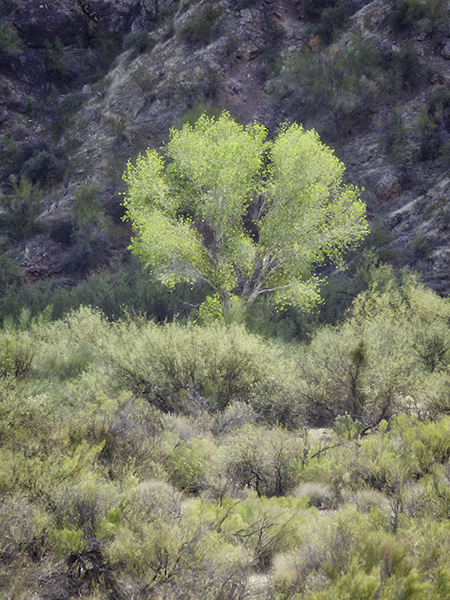 Isolated tree along the banks of the Salt River.
Isolated tree along the banks of the Salt River.
I like how the tree is highlighted against the darker background of the hillside behind. Processed with Adobe Camera RAW, Photoshop and finished with Luminar as a plug-in.
Capturing the image is only the beginning of photography in my opinion. Images are massaged, and the vision is completed in post-production. The tools are quite varied, but I try to settle on specific software so I can use it to its fullest. Below are my current most used software options.
Adobe Bridge, Adobe Camera RAW, and Photoshop – Learn more here
Skylum software including Luminar, Aurora HDR 2018 and the Creative Kit – Learn more here Use the code COATES to receive $10 off your purchase. You can try the software for free for 30 days.
NIK filters – Formerly free from Google DXO has purchased NIK and still makes the plug-ins available for free. They are working on a new release scheduled around the middle of 2018. In the meantime, with a few workarounds, the software still works (mostly) with the current MAC OS system. Learn more here and download for free.
Yours in Creative Photography, Bob

 Screen capture from Adobe Bridge of bluejay flight
Screen capture from Adobe Bridge of bluejay flight This bluejay landed in the top of the tree waving in the light breeze.
This bluejay landed in the top of the tree waving in the light breeze. Flight of the Bluejay with watercolor treatment
Flight of the Bluejay with watercolor treatment Because the sky was flat, I added a cloud image to the Photoshop File.
Because the sky was flat, I added a cloud image to the Photoshop File.




















